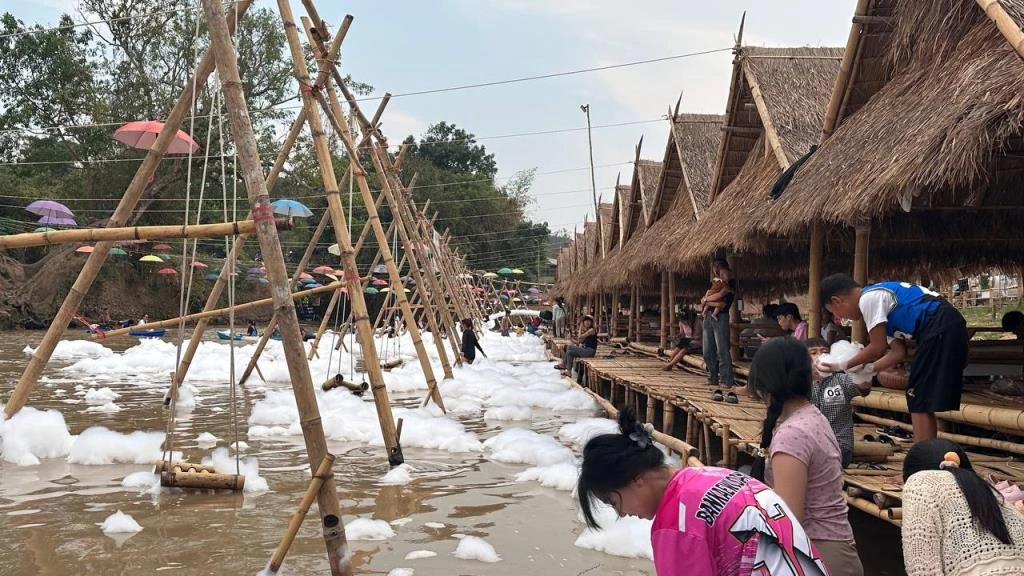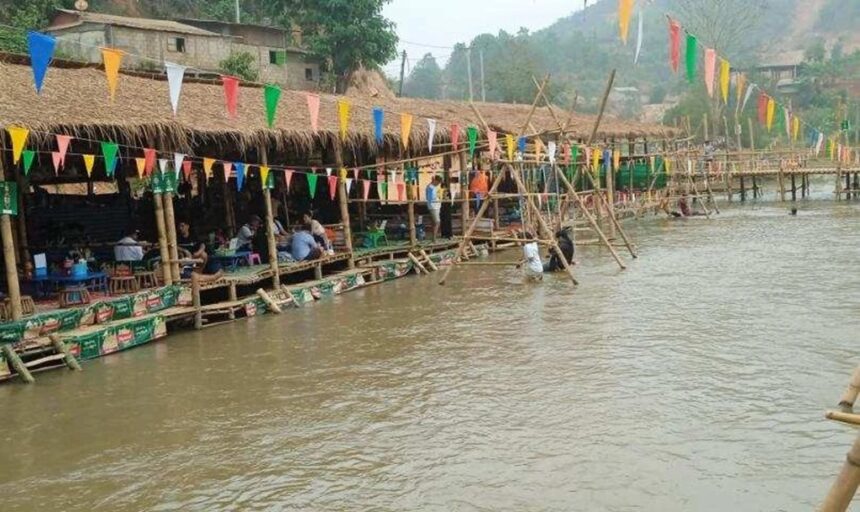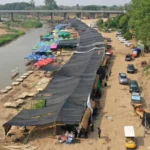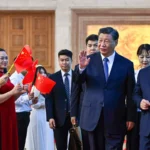Chiang Rai – Residents and vendors in Mae Sai and Tachileik have lined the Sai River with bamboo stalls and floating rafts, welcoming visitors to celebrate Myanmar’s “Thingyan” or traditional Songkran festival. Festivities are set to continue throughout the month of April.
According to local reports, the Sai River, located on the Chiang Rai-Myanmar border near Tachileik, has become a bustling hub ahead of Songkran Festival. The area is filled with temporary bamboo structures and makeshift stalls catering to tourists eager to enjoy the water festival.
The celebrations extend across various waterways in the region, including the Sai, Loi To Kham, and Hock rivers.
The area near Ban Doi To Kham, where the Sai River flows on both sides of Tachileik, has been a particular hotspot. Bamboo structures have been transformed into lively spaces where people can cool off and enjoy the summer celebration.
Thingyan is the traditional New Year festival in Myanmar, typically celebrated in mid-April. It marks the beginning of the Burmese New Year according to the lunisolar Buddhist calendar.
The festival is known for its vibrant water-throwing activities, symbolizing the washing away of the previous year’s misfortunes and sins, and welcoming a fresh start.

Beyond the water play, Thingyan includes cultural and religious traditions. Communities might gather near the Sai River for activities like satuditha (communal feasts offering free food), shinbyu (novitiation ceremonies for young boys entering monasteries), or nga hlut pwè (releasing fish into the river as a meritorious deed).
Traditional foods like mont lone yay baw (glutinous rice balls with palm sugar) or shwe yin aye (a coconut milk dessert) could be shared among participants, fostering a sense of togetherness.
The festival’s timing in April, Myanmar’s hottest month, makes rivers like the Sai a natural draw for cooling off during the celebrations. In Shan State, where the Sai River flows, the festivities might blend local ethnic traditions—such as those of the Shan people—with broader Burmese customs, adding unique flavors to the event.
While major cities like Yangon and Mandalay host large-scale Thingyan events with stages and pandals (temporary water-spraying stations), rural areas near rivers often keep it simpler, with community-driven water fights and rituals.
Meanwhile, in Mae Sai city residents are getting ready for Songkran, streets are being decorated, locals are stocking up on water guns, and families are preparing traditional foods. Temples are also busy, as many will visit to make merit during the holiday.
Related News:
Chiang Rai Moves to Demolish Buildings Along Mae Sai River

Geoff Thomas is an award winning journalist known for his sharp insights and no-nonsense reporting style. Over the years he has worked for Reuters and the Canadian Press covering everything from political scandals to human interest stories. He brings a clear and direct approach to his work.














